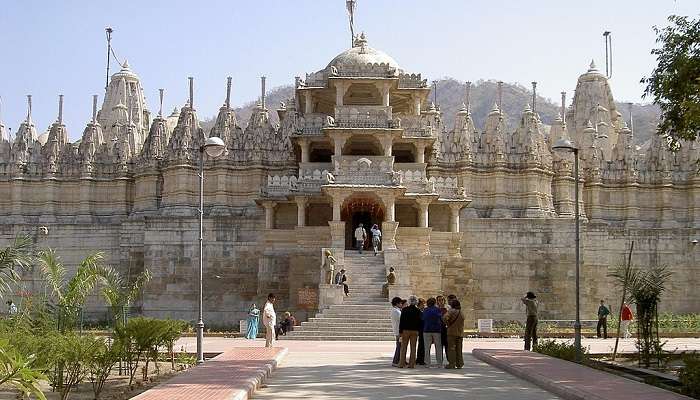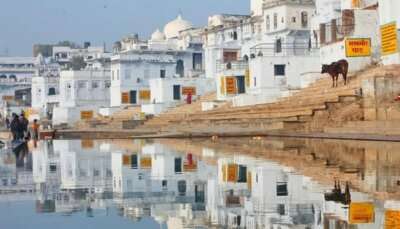Visit A Holy Destination Dilwara Temples Mount Abu For A Memorable Trip In 2025
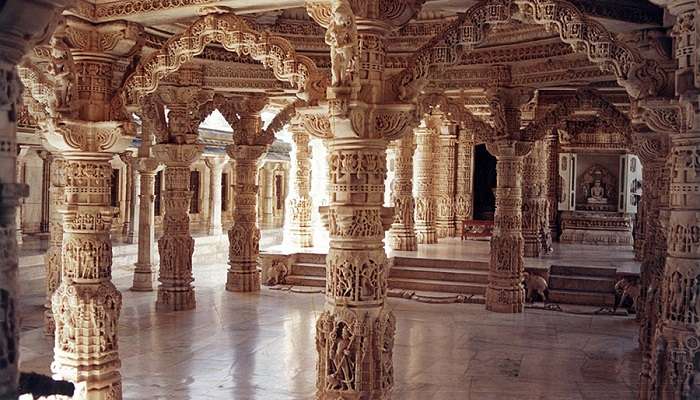
Dilwara Temples Mount Abu is a great location in Rajasthan, India popularly known as an architectural wonder in Rajasthan. It is located amidst the green hills of Aravallis and is a masterpiece that shows fine craftsmanship and intricate marble carvings. The history associated with these temples can be traced back to the 11th and 13th centuries. These temples are dedicated to spiritual teachers known as Jain Tirthankaras. This place shows the rich culture and heritage of the state of Rajasthan. It attracts tourists from all parts of the world due to its stunning beauty and praise-worthy ambience.
Dilwara Temples Mount Abu History And Significance
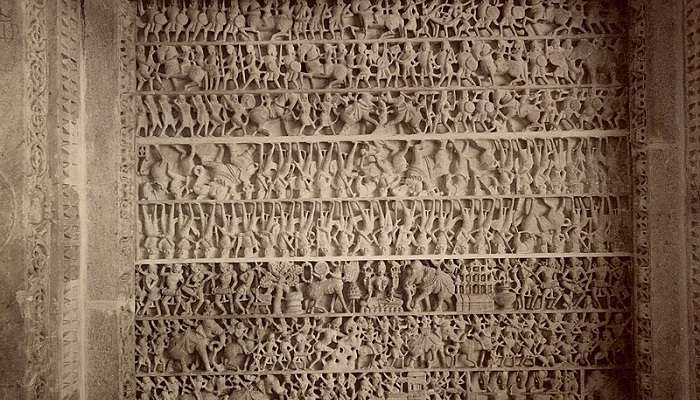
These temples were built by artisans of the Chalukya dynasty, who were known for their exceptional work with intricate marble carvings. They built these temples with extreme detailing and beautiful ceilings that remain unmatched to date. This temple has high spiritual significance among the Jain community because it houses the marble idols of their spiritual leaders. These temples embody the great teachings of Jainism and demonstrate them well through the decorations and design of the temple.
It has a rich historical legacy of several dynasties. It includes Chalukyas, Solankis and the rulers of Mewar. The temple holds extreme beauty due to the intricate motifs and sculptures made from marble. The meticulous work of the craftsman retains its beauty and charm even today. It is a one-stop destination for the ones seeking a great spiritual ambience. This place stands as the epitome of cultural enrichment in Rajasthan, India. It is a jewel in the crown of Indian culture and heritage. The architectural brilliance is beyond words and shows the true historical and cultural significance of this state.
Must Read: Tourist Places In Jaipur
Things To Do

A great option while visiting the temple is to explore it in its full glory by visiting each of the five Dilwara temples. This includes Vimal Vasahi, Luna Vasahi, Pithalkar, Khartar Vasahi and Mahavir Swami Temple. It is common among the visitors to admire the fine marble carvings, domes and pillars of the temple. The intricate detailing and marble work with unique structural designs hold distinctive stories you can teach your children. Idols and sculptures of Jain Tirthankaras and other deities symbolise the cultural heritage of Jainism.
It is a great opportunity to learn about design, philosophy and teachings demonstrated by visiting this place. The tranquil surroundings provide a great option to contemplate and relax and nature. It is a great opportunity for photography lovers to learn the intricate details of the temple. It is advisable to follow the photography instructions when visiting the Temple. You can visit with your family and friends and learn more about the Jain way of life, their significant symbols and rituals.
Major Tourist Attractions Near Dilwara Temples Mount Abu
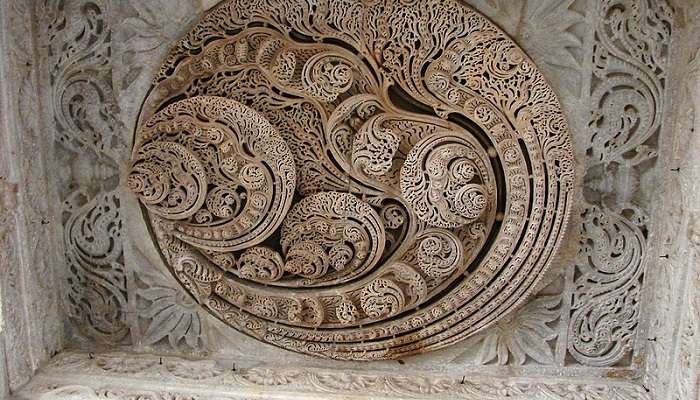
Close to this temple, there are several great locations that you can visit with your family and friends. It includes Nakki Lake which you can enjoy by taking a stroll along its banks. Around 8 km from Mount Abu, there is Anchal Garh Fort built by the Paramara dynasty rulers and is home to several temples. Guru Shikhar and Adhar Devi Temple are two beautiful temples dedicated to Lord Dattatreya and Goddess Durga respectively.
It is considered a perfect destination to hike, as it is said to be suitable for travellers of all ages. It is considered the best way to explore Mount Abu. The trails will lead to beautiful destinations that will leave you stunned. Mount Abu Wildlife Sanctuary, which is spread over 290 km², is home to leopards, wild boars and a variety of bird species native to this place. This place is popular due to its surroundings in the mystic Aravalli range.
Suggested Read: Jaipur Kite Festival
What To Expect 
This temple offers a sacred atmosphere where you can have a meaningful experience that connects you with spirituality. You can appreciate the cultural heritage of Rajasthan and witness the stunning architecture. At this Temple, you can offer prayers and meditate in peace. It is expected from the visitors to follow the dress code which includes covering the shoulders, arms and legs. One must remove his shoes before entering the temple premises. Participating in the rituals by offering sacred flowers and lighting lambs is a common practice in the temple.
You cannot stop praising the intricate carving and the artwork that narrates the religious stories attached to this temple. The learnings of Jainism that you can gain by understanding the beliefs and customs of the community are beyond excellence. You can fully dive into the sacred atmosphere of the temple and appreciate the religious practices.
Further Read: Pushkar Mela
A trip to Rajasthan can provide you with that much-needed break from your busy city life. The scenic beauty of the Dilwara temples mount abu is invaluable and worth every penny. Rajasthan is a state with a rich culture and elegance. You should not miss this beautiful state and its traditions for the beauty that it holds. Book your tickets today and have an exciting trip!
For our editorial codes of conduct and copyright disclaimer, please click here.
Cover Image Credit: Akshat patni for wikipedia
Frequently Asked Questions About Dilwara Temples Mount Abu
What are the popular places near Dilwara Temple Mount Abu?
Near the Dilwara Temples in Mount Abu, you can visit the serene Nakki Lake for boating and leisure. The scenic Sunset Point offers stunning sunset vistas over the Aravalli Range. Achalgarh Fort provides historical insights and panoramic views of the surroundings. Additionally, the Mount Abu Wildlife Sanctuary is perfect for nature lovers and wildlife enthusiasts.
What is the best time to visit Dilwara Temples, Mount Abu?
The best time to visit the Dilwara Temples is from November to February. The weather is comparatively pleasant, making it ideal for sightseeing. The temples are open from morning to late afternoon, so visiting early in the day allows ample time to explore the intricate marble carvings. Avoid the monsoon season (July to September) due to heavy rains. Weekdays are generally less crowded than weekends and holidays.
What is the weather like in Dilwara Temple Mount Abu during Monsoon?
During the monsoon season (July to September), the weather at Dilwara Temples is characterised by moderate to heavy rainfall, which can make the area lush and green but also slippery and humid. The temperatures remain moderate, ranging from 20°C to 25°C. Visiting during this time can offer a unique experience, but it's essential to be prepared for rain and potential disruptions. The mist and greenery can add a serene and mystical charm to the surroundings.
What are the popular food items near Dilwara Temples Mount Abu?
Near the Dilwara Temples, you can enjoy popular Rajasthani dishes like Dal Baati Churma, a hearty meal of baked wheat balls served with lentil curry and sweetened cereal. Gatte Ki Sabzi, made with gram flour dumplings in a spicy yoghurt-based gravy, is another local favourite. Savour the tangy and spicy flavours of Pyaaz Kachori, a deep-fried pastry stuffed with onions and spices. For dessert, indulge in the rich and creamy Ghevar, a traditional Rajasthani sweet.
How to reach Dilwara Temple, Mount Abu?
One can take a flight to Maharana Pratap Airport in Udaipur. Abu Road Junction 28 km from this place has great connectivity to all major cities. Many government and privately operated buses run on this route.
People Also Read:
Jain Temples Jaisalmer Sri Jagannath Temple Hyderabad Bayon Temple Cambodia

Unveil the hidden treasures of the globe and turn every travel dream into reality. As a Content Writer, I am passionate enough to craft stories from ancient wonders to modern marvels. My words paint the picture-perfect itinerary for unforgettable experiences. Let my words be your trusted guide to immerse in the diverse culture and discover the beauty of the unknown.
